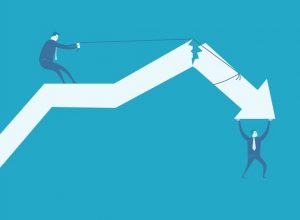Because the global stock market is far more complex than anyone can imagine, it’s easy to come up with investing theories that sound entirely reasonable, but simply don’t describe reality.
One of those theories is that a fund manager or research team can consistently outperform a benchmark index using stock selection, sector rotation and/or market timing strategies. After all, if making money is as simple as buying low and selling high, then surely a so-called skilled investor should be able to do this all day long.
Making this theory even more tempting is the fact that some managers really are able to rack up market-beating gains. But only for the relatively short-term. When you gauge their performance over longer time spans (which are needed for successful retirement), very few managed funds end up with better returns than the benchmark indexes they’re trying to beat, like the S&P 500.
A few weeks ago, S&P Dow Jones Indices released its annual report on how actively managed funds performed against their benchmarks in 2018. And for the ninth consecutive year, the majority (64.49%) of large-cap funds were out performed by the S&P 500.1
This report was especially interesting for Wall Street observers. Active management conventional wisdom suggests that, while passive funds may be able to beat active investing during sustained periods of market growth, when volatility hits it’s better to have a “skilled hand” at the wheel.
But, once again, the data show that this conventional wisdom is wrong.
Last year’s market was (by some measures) among the most volatile on record.2 Yet for 2018 the majority of active funds still underperformed their relative benchmarks.
Aye M. Soe, a managing director at S&P and one of the authors of the report, told CNBC, “Active managers claimed they would outperform during volatility, and it didn’t happen.”
The story only gets worse for active management if we look at longer time frames. This truth is even more apparent looking at time periods that include recessions and bear markets. Over the past 10 years, 85.1% of these managed funds underperformed the S&P 500 Index. And over the past 15 years, 91.6% have lagged behind the index. These numbers take into account “survivorship bias,” a common error where folded or merged funds typically do not get included in the returns data set.
The reasons for this underperformance are simple. While active trading may result in certain periods of market-beating gains, when the higher costs for making those trades are subtracted, the net gain for the investor ends up being less than he would have earned in a broad-based, low-cost structured or passive fund.
For active management to work, it has to consistently and predictably know something about present or future stock prices that the market as a whole doesn’t know. And, in the rear view mirror of history, managers who “get lucky” are all too often confused with having some sort of unique skill. If that seems like an improbable bet to rely on, then you’re well on your way to ignoring some lucky active manager’s 5-star past performance.
While a structured, passive strategy may seem to go against our emotional urge to “do something,” over the long-term it gives the prudent investor the best chance of achieving market rates of return for the asset categories in which they’re invested. Your trusted advisor can show you the best allocation for your time horizon and risk tolerance, and then help you stick with your plan.
Citations:
1 – https://www.cnbc.com/2019/03/15/active-fund-managers-trail-the-sp-500-for-the-ninth-year-in-a-row-in-triumph-for-indexing.html
2 – https://www.cnbc.com/2018/12/14/after-the-most-volatile-year-on-record-strategist-sees-more-to-come.html
Disclosure – http://www.awareinvesting.com/disclosure/


